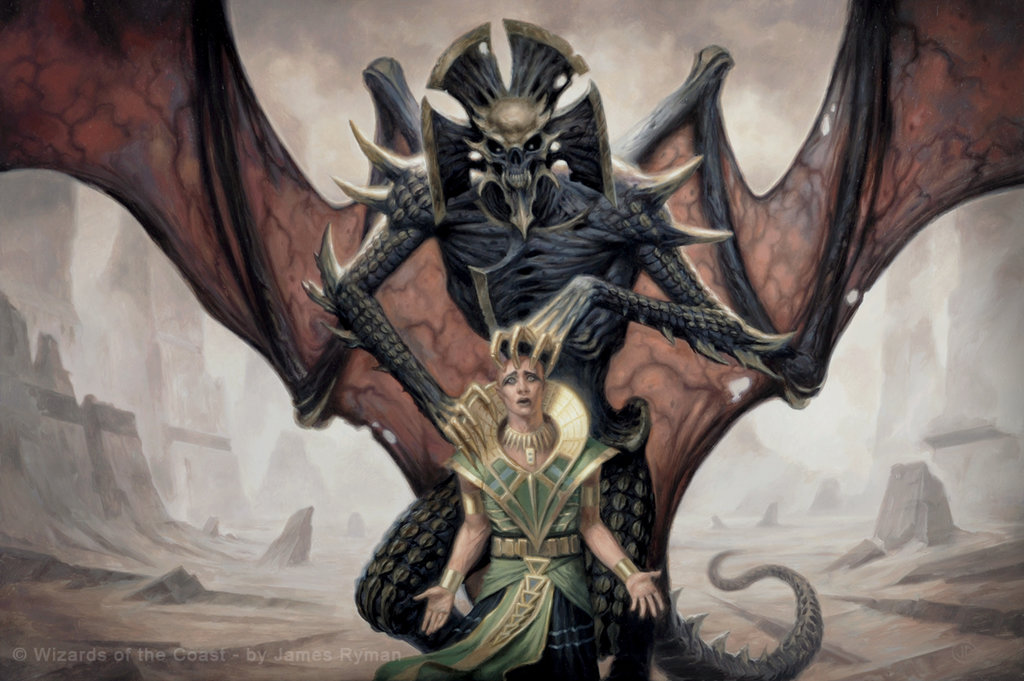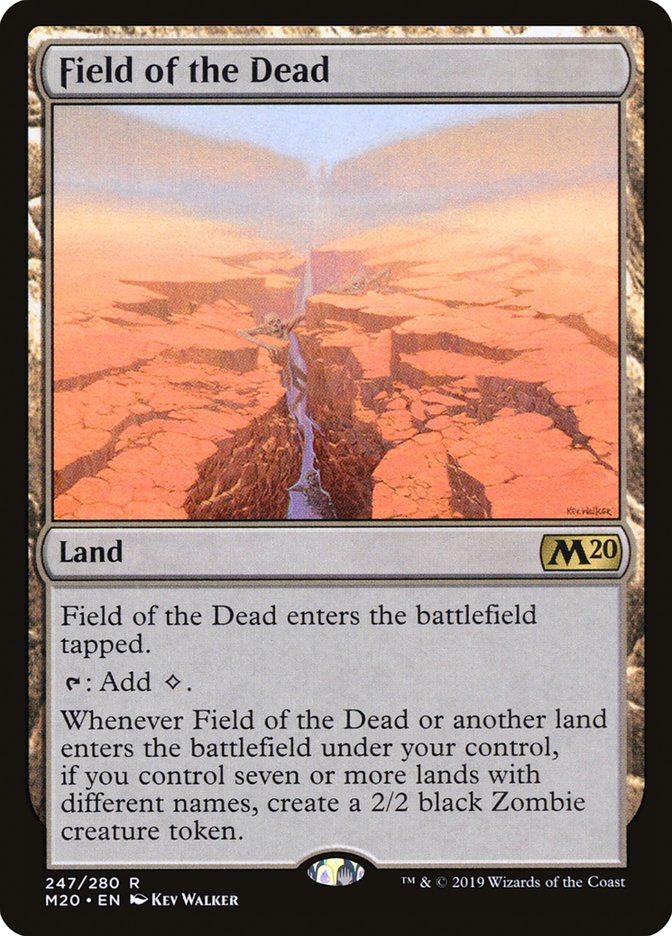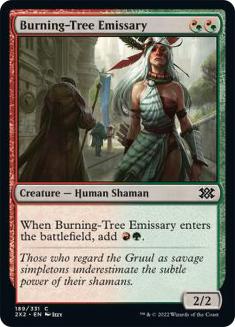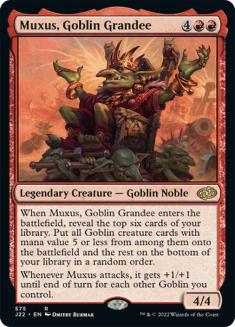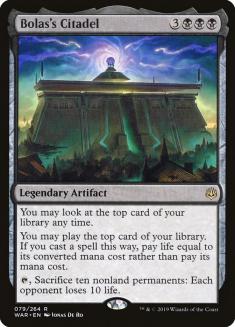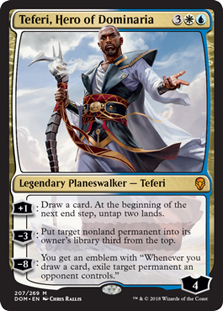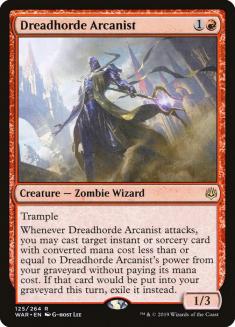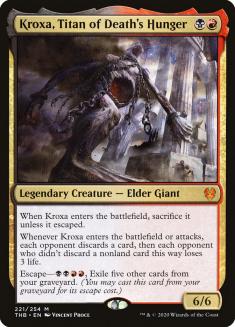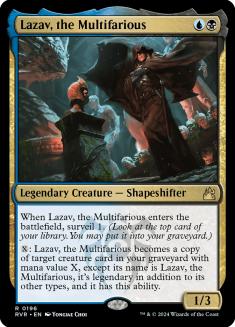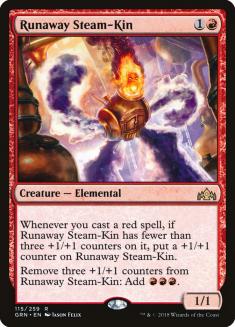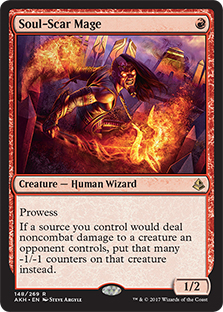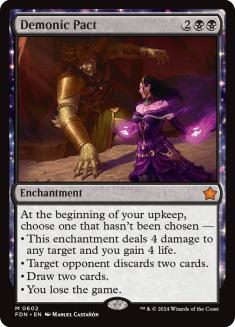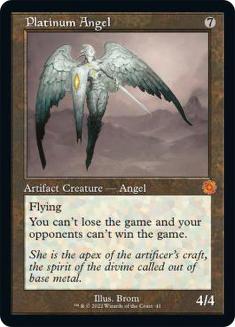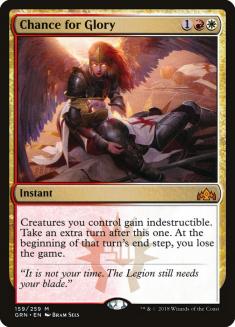This article was written this past weekend under the common assumption by the community that Field of the Dead will be at least re-suspended (but likely just banned at this point). I don’t think there will be any crazy upheavals personally, but I will examine some possible outcomes briefly, mainly just to give some insight into my thought process. Frankly, if super-strange things occur, you, the audience, probably won’t see this, the following paragraphs, and/or article regardless.
The only viable un-suspension is Burning-Tree Emissary. Given the power of linear strategies like Goblins and various Sacrifice / Collected Company strategies, this looks to be a reasonable path forward. Historic’s landscape has changed dramatically since Gruul Aggro’s win rate was deemed too high.
I’d peg this as unlikely to happen — it doesn’t add much texture to the format and bears some risk but I could see the perception of opening up another and/or bolstering aggressive options pre-Players Tour desirable. The fact that BTE is naturally fairly weak with Collected Company (in terms of leveraging its instant-speed nature, at least) is another bonus.
Additional Suspensions/Bans
Seth Manfield predicted Bolas’s Citadel as a potential card to get the axe and this makes a fair amount of sense to me. While Collected Company might be the most powerful card in the Sacrifice decks, it has the benefit of both being brand-new to the format and failing to abruptly end the game on the spot in a fairly unsatisfying way.
Muxus, Goblin Grandee is similar. Paying six mana to win the game on the spot isn’t the most engaging Magic, but this is likely to just come down to raw win rate before a major event.
Point being, these aren’t really a part of the primary community narrative, but they have all the symptoms of something that folks shouldn’t be surprised to see go if that’s where we are in current-but-sort-of-the-past land.
That said, as we’re about to get into, I think these cards are about to become a lot less frustrating.
So Where Are We Now?
Now that Field of the Dead is gone, attacking on the ground is unlocked. This is a pretty big deal for a variety of reasons, but most notably it should make considerable progress in delineating the format.
Historic was dominated by a swath of linear strategies — tons of combo decks, Goblins, Sacrifice, Auras, flying-based aggression like Mono-Blue, and more. It was difficult for midrange and control decks to penetrate the format because in terms of speed, the former had no sizable advantage while still being weak to Field, while the latter just couldn’t beat Field consistently at all.
Now decks can sacrifice speed to be disruptive without facing the jaws of Field of the Dead.
Thoughtseize has become the most important card in Historic. Not only is it now likely the strongest card in the format in a vacuum but its presence does a lot to put positive pressure on how folks can build their decks now.
To elaborate a bit, it is a lot more difficult now to justify building a deck whose primary strategy is racing to a six-drop. Get some of your mana production killed and/or your big card stripped on a key turn? You’re dead.
Goblins should be considerably weaker now given that players should be more willing to play removal, Thoughtseize, and creatures that are large enough to stunt Goblins’s Plan B of “actually attack.”
Sacrifice is far less likely to justify playing twelve to sixteen mana creatures because they aren’t representing any kind of overwhelming gameplan if their Citadels are getting stripped at a higher rate.
Do note that I’m not arguing that these strategies have suddenly become weak; what I’m saying is that as the pressures of the format (in this case Field) evolve, Historic should ideally become a less polarized place, but at the very least churn will take place and there will be need for players to build their decks differently as the level of interaction inevitably waxes and wanes.
What else besides Thoughtseize is a big winner in this world?
Surely you didn’t forget about him?
Shaheen Soorani, rejoice, because control is likely to not only be a viable strategy, but a good one, especially early on before players are building their decks correctly.
Again, citing those powerful six-drop decks, how can they hope to beat Wrath of God + Absorb in a consistent manner given their current state?
Collected Company is certainly an excellent tool, but that’s not going to be enough by itself against the card quality of sweepers, countermagic, and planeswalkers that have essentially been unlocked in Historic.
Some Places to Start
Creatures (27)
- 4 Gifted Aetherborn
- 4 Dread Wanderer
- 3 Kitesail Freebooter
- 4 Spawn of Mayhem
- 4 Gutterbones
- 4 Knight of the Ebon Legion
- 2 Rankle, Master of Pranks
- 2 Murderous Rider
Lands (24)
Spells (9)

Simple. Effective.
Mono-Black Aggro picking up Dread Wanderer in addition to Thoughtseize from Amonkhet Remastered is a huge boon to the archetype. This deck is fast and packs significant disruption and resilience between its plethora of creatures that come back from the graveyard, Demonic Embrace, and the ability to play more lands than the average aggressive deck with Castle Locthwain.
This is one to look out for now.
Creatures (17)
- 1 Young Pyromancer
- 4 Soul-Scar Mage
- 4 Dreadhorde Arcanist
- 4 Tenth District Legionnaire
- 4 Feather, the Redeemed
Lands (22)
Spells (21)

Dreadhorde Arcanist feels poised to make a big splash now. Previously it felt a little silly to have such an anemic attacker, but Thoughtseize + Dreadhorde Arcanist is a powerful combination and the Wizard can also easily dominate creature combat.
This is a slightly modified list that I pulled off MTG Goldfish that I really liked and the removal of Field should do nothing but improve this deck’s standing in the metagame.
Creatures (23)
- 2 Young Pyromancer
- 4 Stitcher's Supplier
- 4 Lazav, the Multifarious
- 4 Dreadhorde Arcanist
- 1 Mire Triton
- 4 Kroxa, Titan of Death's Hunger
- 4 Archfiend's Vessel
Lands (23)
Spells (14)

In a similar vein, this is a Dreadhorde Arcanist / Thoughtseize deck that gets to pack a large resilient punch between Kroxa, Titan of Death’s Hunger; Lazav, the Multifarious (copy Kroxa); Young Pyromancer; and Lurrus as a companion.
It’s very easy for this deck to snowball an advantage quickly between one of the aforementioned combinations and, again, its previous standing as a “pretty slow aggressive” deck has been mitigated significantly.
Creatures (20)
- 2 Grim Lavamancer
- 4 Soul-Scar Mage
- 4 Ghitu Lavarunner
- 4 Viashino Pyromancer
- 4 Runaway Steam-Kin
- 2 Bonecrusher Giant
Lands (22)
Spells (18)

Mono-Red isn’t a Thoughtseize deck, but it’s another strategy that has gone up the power rankings. It’s possible that I should even be more creature-heavy than I am now, but playing Runaway Steam-Kin is no longer an embarrassment, and again this deck has picked up some nice tools recently — particularly in its early-game with Grim Lavamancer and Soul-Scar Mage.
I wouldn’t be surprised if I should be playing another land at this point now that you have access to Ramunap Ruins and Experimental Frenzy seems poised as one of the better cards in your deck.
The Controlling Side
To start, cooking up a traditional control deck in the future is a pretty challenging task, so instead of assuming I can deliver on the right mix of interaction, I’m instead going to offer up two different off-the-wall strategies that fit in the macro-archetype but got munched on by Field of the Dead. There’s arguably way more to explore here than anywhere else, as these decks were so badly suppressed by it!
Creatures (3)
Planeswalkers (7)
Lands (35)
Spells (35)

Demonic Pact + Yorion, Sky Nomad has great potential as a devastating engine against a wide variety of decks, and this to me really feels like the biggest deck to be unlocked and worthy of exploration.
In terms of play pattern, the name basically says it all. We’ve seen these types of decks show up in Standard for a while now, just nothing with as juiced a cast as now between Thoughtseize, Trial of Ambition, and Demonic Pact to hit every street in terms of interaction and powerful engines with Yorion.
Teferi, Hero of Dominaria being a backup bailout button for Pact on top of all of its other strengths is another huge win.
Creatures (2)
Planeswalkers (9)
Lands (35)
Spells (34)

I think I have successfully gotten this deck out of its original meme form.
It’s a little weird, but the traditional end-game setup is to get Platinum Angel onto the battlefield and then cast Chance for Glory, earning yourself both a Time Walk and an indestructible Angel that the majority of the format cannot remove. Congrats, you’ve won.
The deck also has a lot of weird angles and lines with this many pseudo-Time Walks and legitimately free countermagic with Pact of Negation that makes the deck fun and rewarding to play alongside the potential to be extremely powerful.
I’ve enjoyed this a lot, and although I didn’t feel like I had a legitimately bad matchup against Field of the Dead, I couldn’t really beat versions with Ulamogs consistently, and having clearer targets in the metagame should benefit this combo-control strategy considerably.
It feels like Historic is changing every week, but I think it’s safe to say we’ve nailed down a final form heading into our first high-level tournament and I think the format is poised to be in a good spot. Every macro-archetype should be back on the menu and interacting will be better than ever. I continue to be excited for the future of this format.

